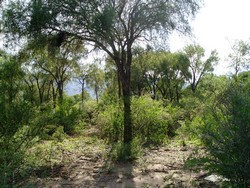Plant traits and the nitrogen cycle
The EU-funded PLABIOF (Linking living plant traits to soil biogeochemical functions in ecosystem patches under different land use regimes using an isotope-based assessment) project investigated how different ecosystems affect nitrogen cycling and soil microorganisms. Researchers began by using natural abundance patterns of stable nitrogen (N) isotopes to study patterns of preferential uptake of N forms and its relationship to plant traits. Natural abundance N signatures of nitrate (NO3-), ammonium (NH4+), dissolved organic N (DON) and whole plants from a semi-arid model forest were therefore analysed to estimate plant N source partitioning and relative N cycling rates under in-situ conditions. Bayesian isotope mixing models were also used to determine the relative contribution of the different N forms to plant N uptake. The results were then related to architectural and symbiotic root traits measured on excavated plant roots. In a second study, scientists examined 192 patches of land under different past and present management, with each patch having a specific plant community diversity and identity. Then they installed more than 800 soil cores into these patches, and filled them with the same soil. Thirteen months after installing the soil cores, researchers returned to experimental sites and injected specially labelled nitrogen atoms that allow the researchers to track the movement of nitrogen in the ecosystem. They measured in-situ gross N cycling and took subsamples for root trait determinations, phospho-lipid fatty acid (PLFA) measurements and dissolved organic carbon (DOC) analyses. The results of the first study showed a close link between soil carbon C and N cycling in semi-arid ecosystems. Researchers rejected the hypothesis that dissolved organic N (DON) is a significant plant N source, suggesting instead that the microbial communities outcompete plants for organic N sources due to the reduced carbon (C)-bioavailability in the soil. The second study revealed that the less disturbed ecosystem types contained a greater abundance of microbes and fungi. In addition, the change in rhizosphere characteristics caused a slowdown in mineral N turnover in sites subject to higher levels of management activity. PLABIOF gives a better understanding of land use change impacts that are predicted to affect soil C allocation below ground and the linkage of biogeochemical cycles. This will help to explain how plant functional biodiversity impacts upon soil biogeochemistry in dryland ecosystems, thus enabling the design of effective and sustainable land management practices.







